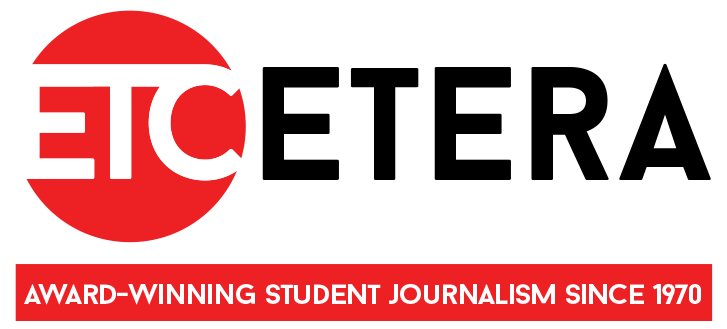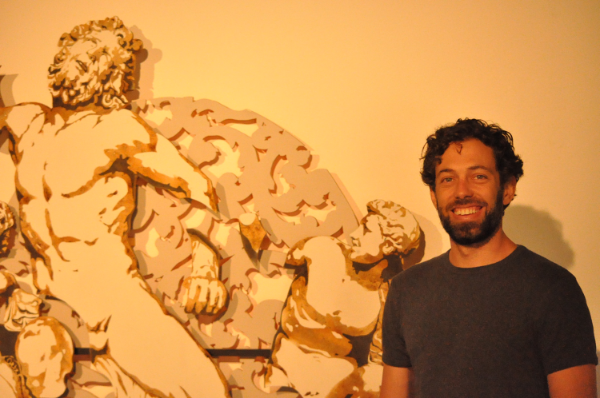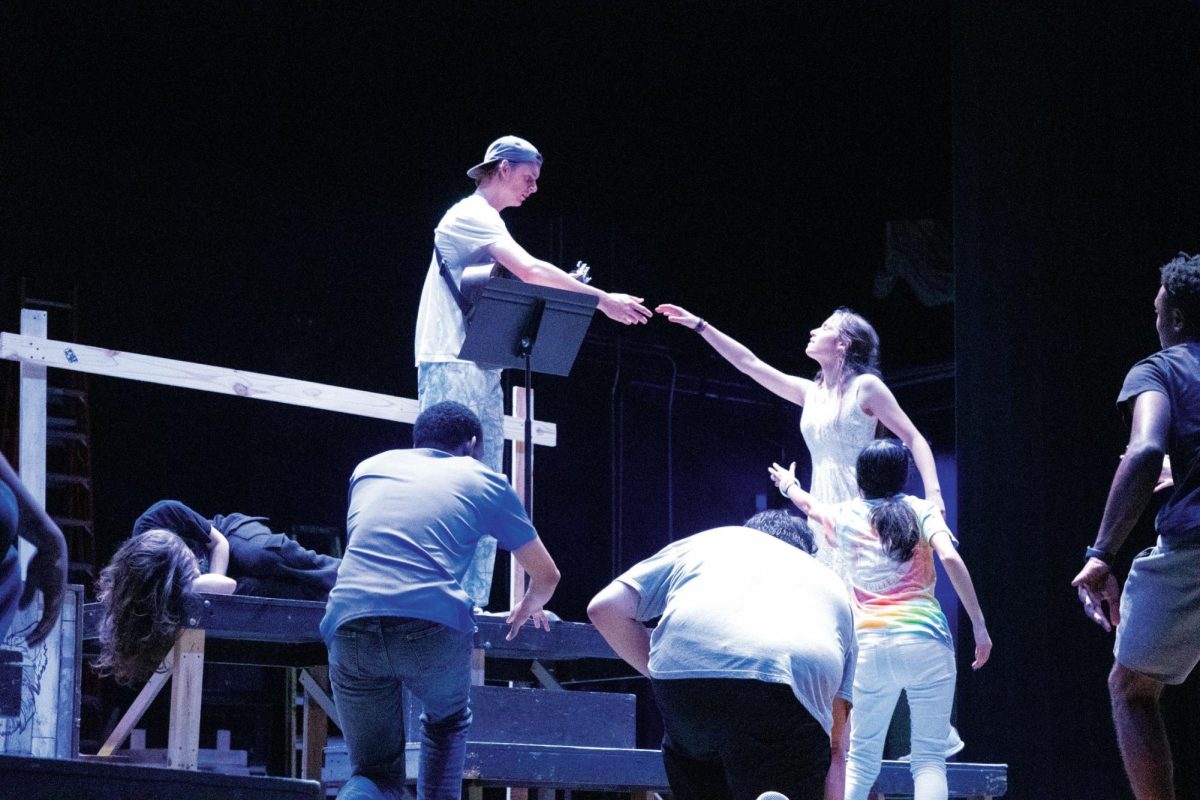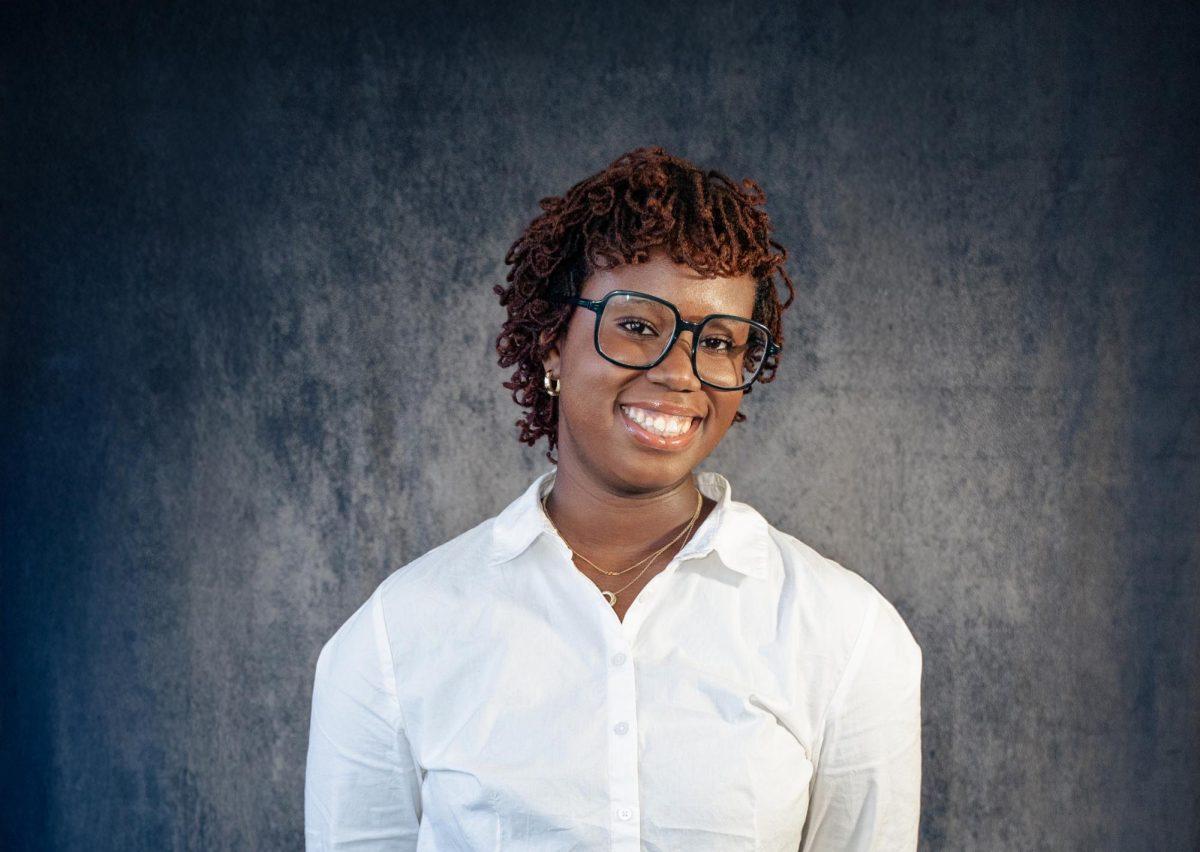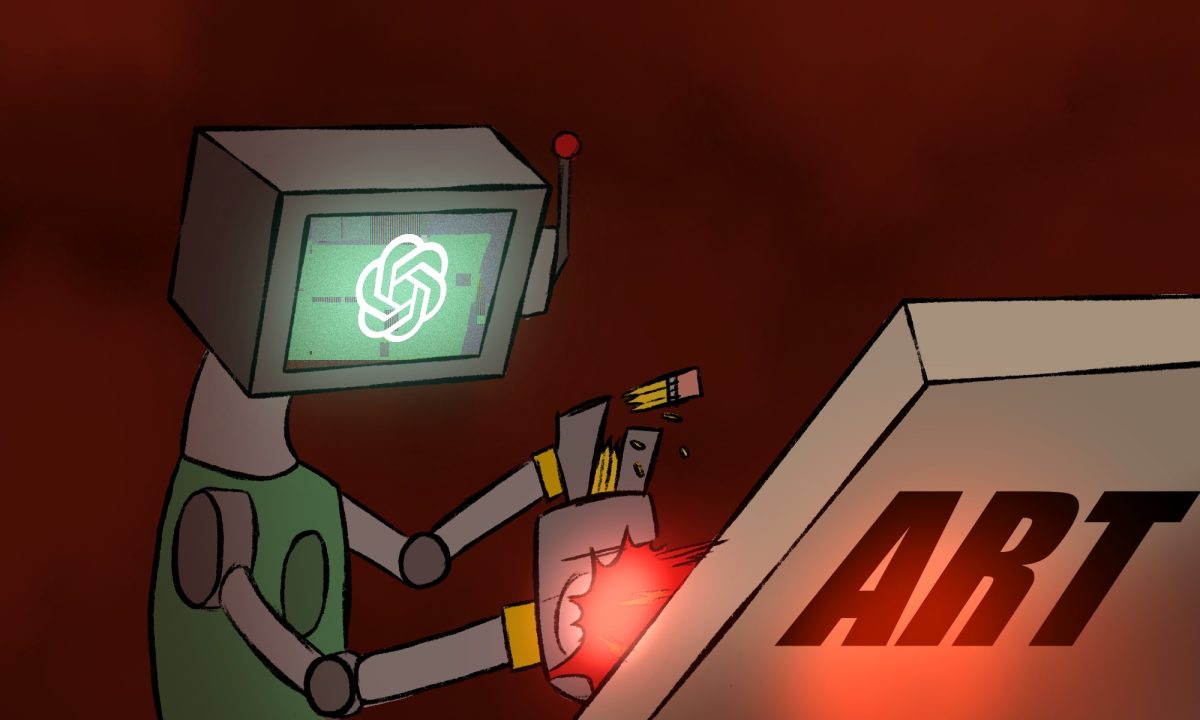
By Justin David Tate, Life & Arts Editor
A yam adorned with mouse ears cuddles to a yam-woman with a gun. Next to it, a large network of plants and greenery gives way to a painted jungle. Across from that piece is a mixture of horror and fantasy come to life in ceramic mold, as creatures with birds attached to their brains and misshapen eyes peek around the F-219 Gallery.
This is the work of the Art Department’s instructors, and it is only half the show at the Meta-Studio exhibit.
The rest of the art from the minds of four completely different instructors hangs in the H Building. Gallery Director IrisBechtol believes the college needs to have an annual exhibition of instructor art to show that its faculty are also professional artists, not just instructors.
One of these professionals, Ryder Richards, a new art appreciation instructor has a piece in H entitled “Connected: Laacoon.”
The work is composed of nude male figures with bulging muscles made from gunpowder and acrylic paint.
Richards first fell in love with the idea of using gunpowder in 2009 when he witnessed guns made with floral patterns engraved in the pistol grips.
These floral patterns were once a part of his work, and now the gunpowder itself has become a part of his work that tries to reflect both beauty and violence.
“This high level of craftsmanship that is on these deadly weapons that are engraved with beauty,” Richards said. “It’s sort of the contradiction inherent in that, and maybe in some ways how our culture aggrandizes violence and packages it up as this amazing beautiful thing.”
Another new instructor with a completely different style is Eric Stevens. His work is small and uses pitch black to surround bright colors such as pink, yellow and blue.
Two works, displayed side by side, are titled “Failure 16: Canberra is Where” and “Failure 17: Weeping Yellow.” Both evoke a confused emotional response from long-time art appreciation instructor David Willburn.

He doesn’t comprehend their titles and therefore begins to form his own conclusions about the work after deeper reflection.
“They’re titled failures, and I don’t know why because I haven’t spoken with Erica about where those titles come from,” Willburn said. “And I don’t know if I necessarily want to, because I think I’m kind of enjoying my meaning that I get from those pieces.”
A group of three young male students walk into H and notice drawing instructor Kathy Windrow’s “Dance of the Whippoorwill, Dance of the Weasel.” It is an installation of multiple Myrtle Beach tree branches with red and blue acrylic paint hanging from the ceiling. The students, Evan Uresti, Paul Gales and Chris Uresti walked through the branches as if exploring a hanging forest.
When they approach Richard’s “Connected: Laacoon” piece and learn that the figures were drawn with gunpowder, they each let out a collective, “Wow!” before pressing their noses to the work to further dissect it.
While the male students were impressed with Richard’s work in particular, Bechtol said she enjoyed the “goofier” works of the upstairs gallery.
The biggest example of the kind of goofy work she was drawn to recently was the “CaYammity Jane and the Yamster” sculpture made from two yams grown in Windrow’s office, one adorned with ears and a cutout of Calamity Jane, a Western legend.
One of the pieces Willburn said he found most intriguing from the upstairs gallery in the F Building was “Black Shapes of Lumpy Space” by Bechtol.
The work is composed of a projected image of black dots along with some pink and red. The image flickers and is in a dark corner that allows the light of the projector to illuminate brighter and more obviously, even from outside the gallery.
“The reason that I enjoy it so much is it’s like a magnet,” Willburn said. “You can’t walk by the upstairs gallery without looking into it. It like pulls you through the gallery as you’re moving toward that sparkling projection. And that is good curating, the way that artwork is arranged within a gallery to encourage you to move through a space in a very specific way.”
Overall, the space is filled with works that show off the diversity of the art staff. Willburn said he just hopes students see it.
“We don’t just teach it,” Willburn said. “We’re out there making it and doing it and showing it, talking about it. I think that’s important.”
The exhibit ends Sept. 27.
